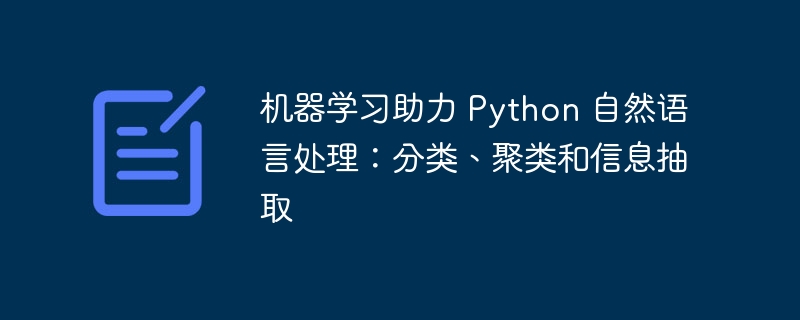

Classification
Classification involves assigning text data to predefined categories. InNLPthis might include identifying spam, sentiment analysis or topic classification. scikit-learn is a popularpythonlibrary that provides a range of MLalgorithmsfor classification, such as support vector machines (SVM) and Naive Bayes. By using a trained model to classify new text, we canautomatetasks that previously required manual execution.
Clustering
Clustering is an unsupervisedlearningtechnique used to group data points into different categories without pre-defining the categories. In NLP, clustering can be used to identify patterns and topics in text, such as discovering different topics in a text corpus or grouping customer reviews. scikit-learn provides a wide range of clustering algorithms such as k-means clustering and hierarchical clustering.
Information extraction
Information extraction involves extracting structured data from text. In NLP, this might include extracting events, entities, or relationships. spaCy is aPythonlibrary designed for information extraction. It provides a pre-trained model that can recognize various entity types such as people, places, and organizations. By using a combination of rules and ML algorithms, we can extract valuable information from unstructured text.
Applications
Best Practices
By leveraging the power of ML, Python NLP can automate complex tasks, improve accuracy, and extract valuable insights from text data. As the fields of NLP and ML continue to advance, we can expect to see even more exciting applications and innovations in the future.
The above is the detailed content of Machine learning powers Python natural language processing: classification, clustering and information extraction. For more information, please follow other related articles on the PHP Chinese website!




